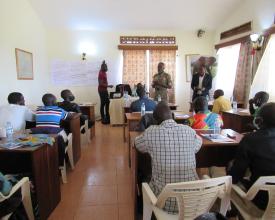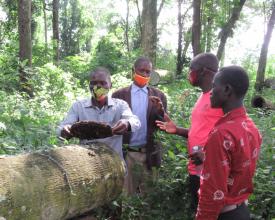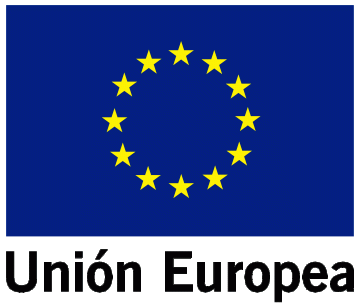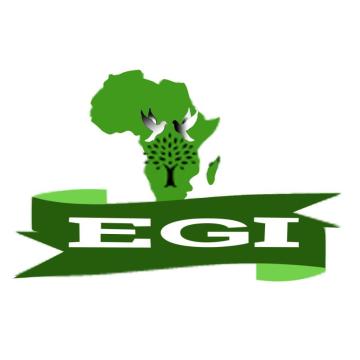
Capacitar a las comunidades para que dispongan de medios de vida alternativos sostenibles para hacer frente a la crisis de Covid-19

Antes de la pandemia de Covid-19, más del 90 % de los miembros de las comunidades que viven en los alrededores de las zonas protegidas de las cataratas Murchison obtenían ingresos de actividades relacionadas con el turismo. Incluso el Estado de Uganda en su conjunto dependía en gran medida del turismo, que contribuyó al 7,9% del PIB en 2019.
Como consecuencia directa del cierre del turismo, los aldeanos locales se adentraron en la Zona Protegida para cazar carne de animales silvestres, buscar comida, talar árboles para obtener carbón y encontrar otros recursos para obtener ingresos.
El equipo del Instituto de Gobernanza Medioambiental (EGI) ha estado trabajando en la diversificación sostenible de los medios de subsistencia para aumentar la resiliencia de las comunidades locales y en actividades de concienciación, que finalmente recibieron una gran atención en los medios de comunicación. Gracias a una combinación bien articulada de acciones y asociaciones de apoyo, las comunidades locales pudieron superar los retos planteados por la pandemia y mejorar sus medios de subsistencia, con consecuencias muy positivas para la integridad del Área Protegida.
Contexto
Défis à relever
- Falta de medios de subsistencia diversificados para las comunidades locales, que dependen casi exclusivamente del turismo.
- Aumento drástico de las invasiones en el Área Protegida durante la pandemia.
- Recursos limitados del gobierno para responder a la crisis de invasión, ya que la economía se vio afectada.
Ubicación
Procesar
Resumen del proceso
Por un lado, las comunidades locales, a través de los campeones de las aldeas, recibieron formación y apoyo para crear empresas domésticas, como apicultores o agricultores comerciales, basándose en lo que la gente solía hacer, pero mejorando la comercialización y el envasado, así como la gestión y las técnicas utilizadas. Esto garantizó un aumento de los ingresos, lo que tuvo un efecto directo en la reducción de la caza furtiva en el Área Protegida. Por otro lado, los grupos de las comunidades locales que participan en actividades artísticas, difunden mensajes contundentes entre sus iguales, para promover la conservación. Los estatutos de las comunidades reflejan su voluntad de respetar la integridad de la fauna y la flora del Área Protegida de las cataratas de Murchinson. Otros agentes, tan diversos como las autoridades locales, los medios de comunicación y la empresa de telecomunicaciones, contribuyeron a reforzar el éxito de las distintas acciones estratégicas que llevamos a cabo.
Bloques de construcción
Desarrollo de medios de vida diversificados
El EGI realizó una evaluación rápida de los medios de subsistencia diversificados para averiguar qué hacían ya las comunidades locales.
La apicultura resultó ser una actividad generadora de ingresos común, impulsada por la gran demanda de productos derivados de la miel. Los ingresos de las familias han aumentado gracias a la venta de miel y productos derivados, como medicinas, veneno de abeja, propóleos, vino y cosméticos. Esto les está ayudando a protegerse de los efectos del cambio climático, como sequías e inundaciones prolongadas que afectan negativamente a la agricultura, por lo que pueden mantener sus ingresos y sus medios de subsistencia, lo que hace frente a las principales causas de la caza furtiva.
Otro sector de intervención fue la agricultura. Las comunidades locales recibieron formación para mejorar la resistencia de sus cultivos al cambio climático.
Factores facilitadores
Los campeones comunitarios asumieron un papel de liderazgo en el intercambio con su comunidad en general. También redactaron sus estatutos junto con el EGI, durante las reuniones comunitarias, en los que se obliga a la gente a no realizar ningún acto de caza furtiva, comercio de especies o productos, ni entrada ilegal en el Área Protegida. Se trata de la primera normativa local de la zona.
Lección aprendida
- Identificar y utilizar el modelo de campeones comunitarios es una herramienta y un método eficaces para implicar a las comunidades en la diversificación de sus medios de subsistencia, aumentar la aceptabilidad del proyecto y atraer a las comunidades para que abracen los esfuerzos de conservación. Esto permite una rápida adopción de las opciones de medios de vida alternativos.
- La colaboración con las principales partes interesadas, como la UWA y los funcionarios forestales y de medio ambiente de los distritos, es fundamental para que la EGI pueda seguir colaborando con las comunidades durante la crisis de COVID 19.
- La gestión de conflictos y amenazas contra la vida salvaje, como la caza furtiva, requiere una mayor implicación y participación de la comunidad en la planificación, la ejecución y el diseño del objetivo final, ya que aumenta la implicación y afina las estrategias eficaces.
- Llevar a cabo una evaluación de las necesidades de la comunidad para determinar los enfoques que funcionan con las distintas comunidades es clave para aplicar intervenciones a medida.
- Responder a una crisis de conservación exige comprender cuidadosamente las necesidades de la comunidad y utilizarlas para modelar intervenciones inmediatas y a largo plazo que aumenten el apego de las comunidades a la vida salvaje.
Potente enfoque de sensibilización
La EGI se asoció con instituciones culturales de Bunyoro y Bugungu para impartir formación artística a la población local. 20 grupos comunitarios, entre ellos mujeres, jóvenes y niñas, formaron diferentes grupos de teatro, que representan obras, canciones y bailes, transmitiendo mensajes contundentes, a la vez que proporcionan entretenimiento a las comunidades locales. Su éxito es tal que ahora se les contrata en diferentes ocasiones para actuar, lo que también proporciona ingresos a estos grupos de teatro. Siguieron actuando durante la segunda oleada de Covid-19, en programas de radioteatro.
Factores facilitadores
La asociación con las instituciones culturales permitió desarrollar el enfoque cultural y los mensajes adecuados para apoyar el cambio de comportamiento entre las comunidades locales.
Lección aprendida
Los líderes culturales y religiosos ejercen una gran influencia en sus comunidades, por lo que implicarlos desde el principio en el diseño del proyecto aumentó la eficacia del planteamiento.
Los valores y costumbres culturales deben integrarse en el proyecto, ya que las comunidades sienten un apego estético por él.
Múltiples agentes de apoyo
El EGI ha contado con la participación de múltiples y diversos actores, en apoyo de diferentes e importantes aspectos de la estrategia global. En primer lugar, las autoridades locales fueron clave, ya que facilitaron el acceso del equipo del EGI a la zona protegida, en momentos de bloqueo y acceso restringido a transportes y lugares. En segundo lugar, los medios de comunicación locales y nacionales apoyaron las distintas actividades, organizando tertulias para compartir información y apoyar los esfuerzos de educación y concienciación. EGI tuvo 16 oportunidades para concienciar sobre la importancia de promover la conservación en tiempos de Covid-19 en el país. Por último, la empresa de telecomunicaciones contribuyó a resolver los conflictos entre el hombre y la vida salvaje, estableciendo una línea gratuita para el medio ambiente que permite a las comunidades llamar a EGI y a los guardas del parque si, por ejemplo, los elefantes salen del parque con el riesgo de dañar sus campos. La llamada telefónica permite una respuesta rápida, en la que los guardabosques devuelven a los elefantes a la zona protegida, evitando la matanza de estos animales.
Factores facilitadores
El EGI experimentó un aumento significativo de su visibilidad y del trabajo que realiza, tanto a escala local como internacional, desde que recibió la subvención rápida Save Our Species de la UICN y figuró en el sitio web. El EGI recibió, por ejemplo, 18 solicitudes de entrevistas de miembros internacionales que querían entender el trabajo, cómo lo hacemos y el impacto que Covid 19 ha tenido en la conservación, así como nuestra respuesta a ellas. Esto dio a la organización reconocimiento internacional, ya que la información nos fue acreditada.
Lección aprendida
Las asociaciones son fundamentales tanto con el gobierno como con las comunidades locales en respuesta a una situación de emergencia en materia de conservación.
Impactos
El nivel de invasiones se redujo drásticamente de 32 a 6 casos en 12 meses.
Se han diversificado los medios de subsistencia para apoyar a un mayor número de miembros de la comunidad, por ejemplo, 366 hogares han recibido formación en apicultura (se les proporcionaron 200 colmenas), 612 miembros de la comunidad han adoptado prácticas mejoradas de uso de la tierra agrícola resistentes al cambio climático. Los ingresos generales de los hogares de la comunidad han aumentado y sus negocios también se han hecho más resistentes.
La formación y participación de los jóvenes en representaciones artísticas para concienciar sobre la relación entre la conservación de la biodiversidad y los medios de vida humanos llamó la atención de los medios de comunicación. Los grupos de teatro son ahora contratados a menudo para actuar, ya que transmiten mensajes contundentes sobre los beneficios de la biodiversidad y cómo vivir en armonía con la vida salvaje.
La relación entre las comunidades locales y la Autoridad de Vida Silvestre de Uganda ha mejorado; la autoridad utiliza menos la fuerza para reforzar la ley de Áreas Protegidas.
Las comunidades locales redactaron y aprobaron un reglamento para regular las actividades en las zonas protegidas, que fue refrendado por los líderes del distrito.
Beneficiarios
- Comunidades locales de los cinco distritos de Hoima, Masindi, Bullisa, Kiryandongo y Kibale en torno al cinturón verde de las cataratas Murchison
- Equipo de gestión del área protegida de las cataratas Murchison
Objetivos de Desarrollo Sostenible
Historia
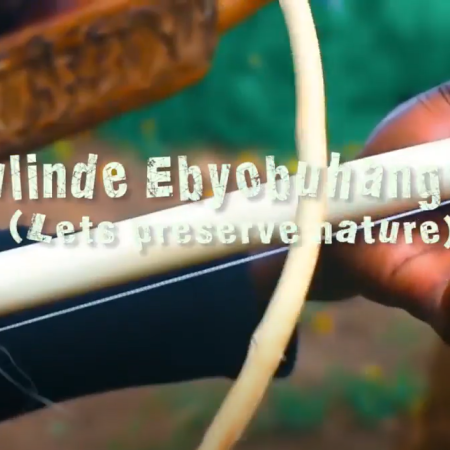
El Sr. Kwikiriza Tickey es el cantante principal y presidente del grupo de teatro Friends of Chimpanzee.
Se encuentra en el corredor de chimpancés que conecta las reservas forestales de Bugoma y Budongo, dentro del Parque Nacional de Murchison falls. El grupo surgió de la necesidad de revertir la venganza de las comunidades contra los chimpancés, que empezaron a invadir sus asentamientos destruyendo cultivos y viviendas. Las comunidades no sabían que sus acciones de invasión del hábitat de los chimpancés para obtener leña y materiales de construcción eran las responsables del impacto negativo.
El grupo está formado por 25 miembros (16 hombres y 11 mujeres) y utiliza herramientas locales primarias para generar música, danza y teatro con el fin de sensibilizar a las comunidades sobre cómo vivir en armonía con la naturaleza. En la actualidad, el impacto del grupo ha sido poderoso para cambiar la mentalidad de la comunidad y mejorar la conservación de los chimpancés.
Vea el videoclip de su canción "Let's preserve nature" en el enlace de vídeo de los recursos que figuran más abajo. La letra de la canción en inglés es la siguiente
Protejamos la naturaleza y no destruyamos el medio ambiente, nos proporciona el sustento y nos apoya de diferentes maneras.
El bosque, los lagos y los pantanos trabajan juntos para darnos aire fresco, los alimentos que comemos y también proporcionan refugio a nuestros antepasados los chimpancés.
Los estudiosos e investigadores dicen que evolucionamos a partir de los chimpancés, por eso comen, se mueven, bailan y juegan como nosotros.
Ves cómo bailamos, así bailan ellos también en la selva cuando están contentos. No destruyas su hogar y los hagas infelices. Debemos protegerlos porque forman parte de nuestra historia. Somos amigos de los chimpancés, del bosque y de otros animales.
No deberíamos destruir el bosque talando árboles porque también son nuestro hogar espiritual, nuestros padres solían rezar en estos bosques y recibían bendiciones, ¿por qué deberíamos destruir las cosas que nuestros padres solían atesorar?
Incluso hoy en día los árboles que están viendo nos proporcionan agradables sombras, los árboles nos ayudan con la formación de precipitaciones de las que dependemos para plantar nuestros cultivos como Matooke (plátanos), batatas, sorgo.
He oído a gente quejarse de que los animales vienen y destruyen nuestras cosechas y nuestras casas, pero es porque nosotros hemos destruido sus casas, asegurémonos de que tienen una casa y no vendrán a nuestras casas.
La naturaleza es muy cara, mira si la destruimos pero muy bonita si la conservamos.
Os hemos aconsejado que protejáis la naturaleza, que no destruyáis la vida salvaje.
Os lo he aconsejado a todos, id vosotros también y contádselo a los demás. La naturaleza es nuestro medio de vida, ¡protejámosla!


